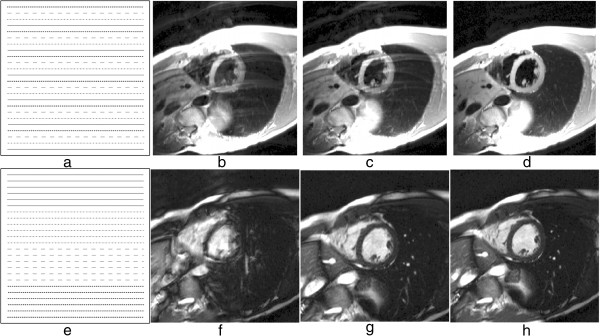Figure 17.

Breathing motion artefacts with two different phase-orders. This figure shows the artefacts caused by changes in respiratory position at different times during a breath-hold acquisition. a) Shows an interleaved segmented phase-order (as used in a black blood TSE sequence), with 4 segments, each with 6 phase-encode lines, each colour/line-type represents a different segment. b) The effects of a respiratory movement in the middle of the acquisition. c) The effects of a respiratory movement at the end of the acquisition. d) A good breath-hold. e) Shows a block sequential phase-order case (as used in a cine bSSFP sequence), with 4 segments, each with 6 phase-encode lines, each colour/line-type represents a different segment. f) The effects of a respiratory movement in the middle of the acquisition. g) The effects of a respiratory movement at the end of the acquisition. h) A good breath-hold. With a block sequential phase order the central region of k-space is acquired during a certain well defined period, and not spread throughout the whole acquisition window, therefore if no respiratory motion happens during this period, the artefacts are less conspicuous.
